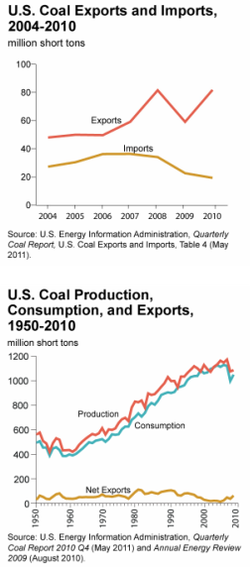Economic Impact and High Demands on Coal

As the increased demand to decrease harmful emission like soot and smog, the Environmental Protection Agency (EPA) has targeted many coal plants. Companies therefore need to install new pollution controls that are necessary to cut emission would cost companies around $180 billion. This will save $280 billion per year that is spent in healthcare by the same companies. By meeting the EPA standards by 2014, the generating capacity will decrease by 15%. EPA regulations will stifle the economic recovery by cut 1.4 million jobs in the coal industry and cause electric rates to increase from 11% to 23% because of the demand to meet the short time frame of 3 years.
Benefits of an extended deadline to 2020 will maintain current jobs, the creation of new jobs that would last more than a decade that are needed to fabricate the pollution reduction control systems. The overall cost and the increase in electric prices will decrease or remain low compared to the projected increase. The projected demand of coal is to decrease by 15% at that time and the turn will be to natural gas.
Stagnant progresses in providing replacement for Coal for countries that consume Coal have caused the price of coal to increase by 5-10%. China and India reliance on coal has yielded that coal still maintains as a needed source of energy to maintain their economies.
For now, converting coal to a cleaner source of energy has come as a high cost to the industry. The economic reliance of some countries has decreased the benefits of making coal clean in use.
Benefits of an extended deadline to 2020 will maintain current jobs, the creation of new jobs that would last more than a decade that are needed to fabricate the pollution reduction control systems. The overall cost and the increase in electric prices will decrease or remain low compared to the projected increase. The projected demand of coal is to decrease by 15% at that time and the turn will be to natural gas.
Stagnant progresses in providing replacement for Coal for countries that consume Coal have caused the price of coal to increase by 5-10%. China and India reliance on coal has yielded that coal still maintains as a needed source of energy to maintain their economies.
For now, converting coal to a cleaner source of energy has come as a high cost to the industry. The economic reliance of some countries has decreased the benefits of making coal clean in use.
